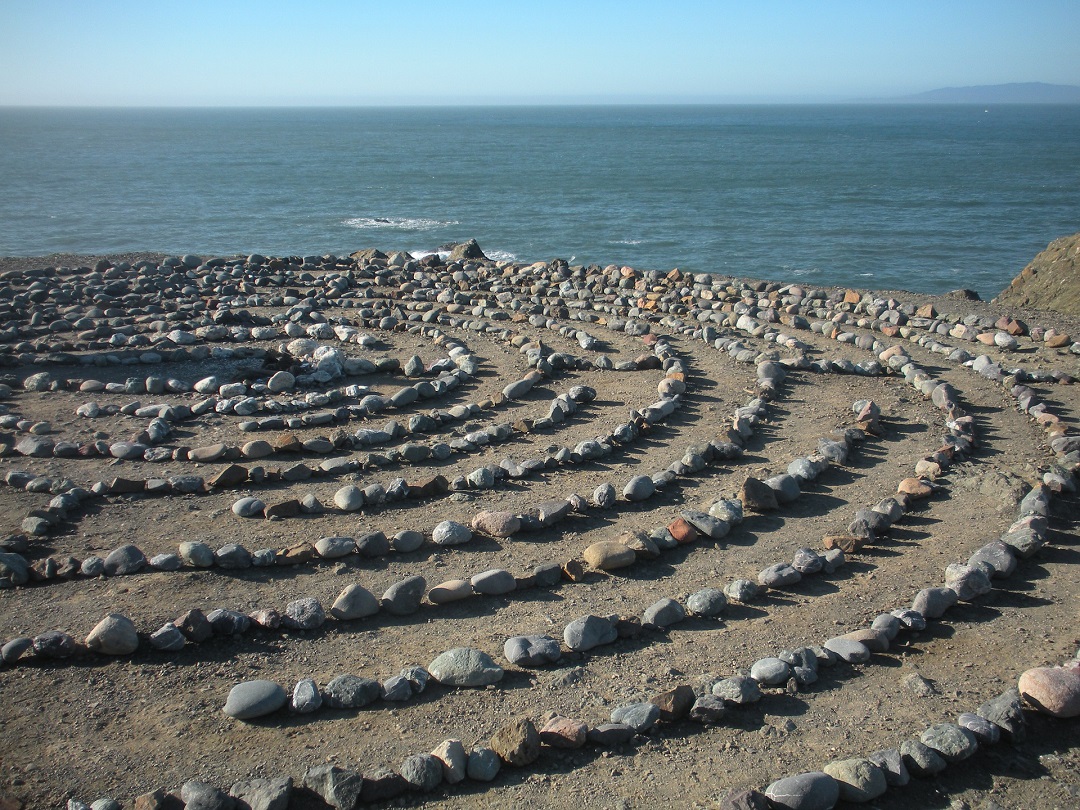Walking a labyrinth is an ages-old form of meditation, pilgrimage, and repentance. The most well-known labyrinth is in Chartres Cathedral outside of Paris, built around 1200. Many labyrinths are modeled from this design and are in or around churches. However, their purpose today has extended beyond religious seeking, and they are often walked for grieving, therapy, and meditation. While the designs of labyrinths vary, they are not mazes – you can’t get “lost” in a labyrinth. The single path leads to a center that depicts a flower, cross, or other symbol. Then, when you are ready, you retrace the path out of the labyrinth, taking with you resolution, healing, or peace.
In June while in Penha Longa, Portugal, I participated in a meditation on a Chartre-style labyrinth. I signed up for the class knowing absolutely nothing about this form of meditation – it sounded interesting. The setting was stunning; the labyrinth is situated in an outdoor terraced garden in the mountains outside of Lisbon. This labyrinth is made of native white and black limestone squares, uneven but smooth. I chose to do my medidation in bare feet to really connect with the earth.
Typically, before entering the labyrinth (there is only one entrance), you meditate or think on a question or issue that is on your mind. There are no rules to walking a labyrinth other than keeping silent. If you are alone, you face no external obstacles or choices and can walk at your own pace and think of no one else. If you are with others, you and they must accommodate others’ pace and direction. Do you step aside when faced with someone walking toward you, or do you expect him or her to move out of your way? Do you slow down so as to not rush the person in front of you, or do you adjust your pace to meet theirs? It’s not difficult to understand that these experiences are metaphors for everyday life.
The most persistent thought I had while walking the labyrinth is that you need to look up to keep your balance. If you stare down at your feet, and focus on where you are, you can easily misstep and miss out on the beauty of the labyrinth. Additionally, if you stare down, you have no idea where you are going, where the next turn of the path is, or who might be in your way or moving to accommodate you. But you can’t see too far ahead in a labyrinth; it’s impossible to truly see the end of the path.
Like with many new experiences, I was completely in the dark about the history and popularity of walking a labyrinth. On the day after I did the meditation, there was a passage in the novel I was reading where a young woman who had experienced significant trauma was guided through a labyrinth by an older woman whose husband had built it for her as a means of grieving. I read it over and over, wondering if I would have even noticed and understood it had I not had the previous day’s experience. How much to we miss because we are not open to new experiences?
I was impressed by how beneficial this type of meditation would be for people who have trouble quietly sitting for a more typical medication. I think this type of practice would be excellent for building trust, non-verbal communication, cooperation, and self-awareness. Of course, I had to investigate further the practice of labyrinth meditation and talked with the leader after the class ended. I found a world-wide labyrinth locator and learned that St. Andrew’s Episcopal Church in Albany – where Mark and I were married – has a public, Chartres-style labyrinth outside, which I intend to visit.


